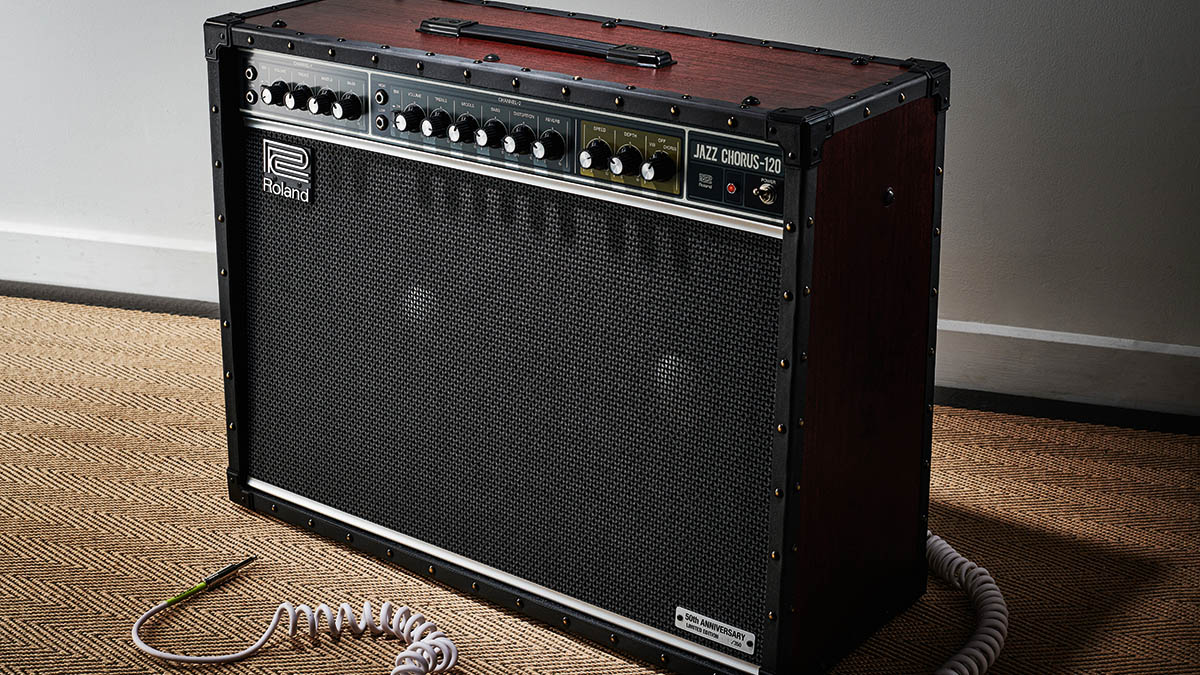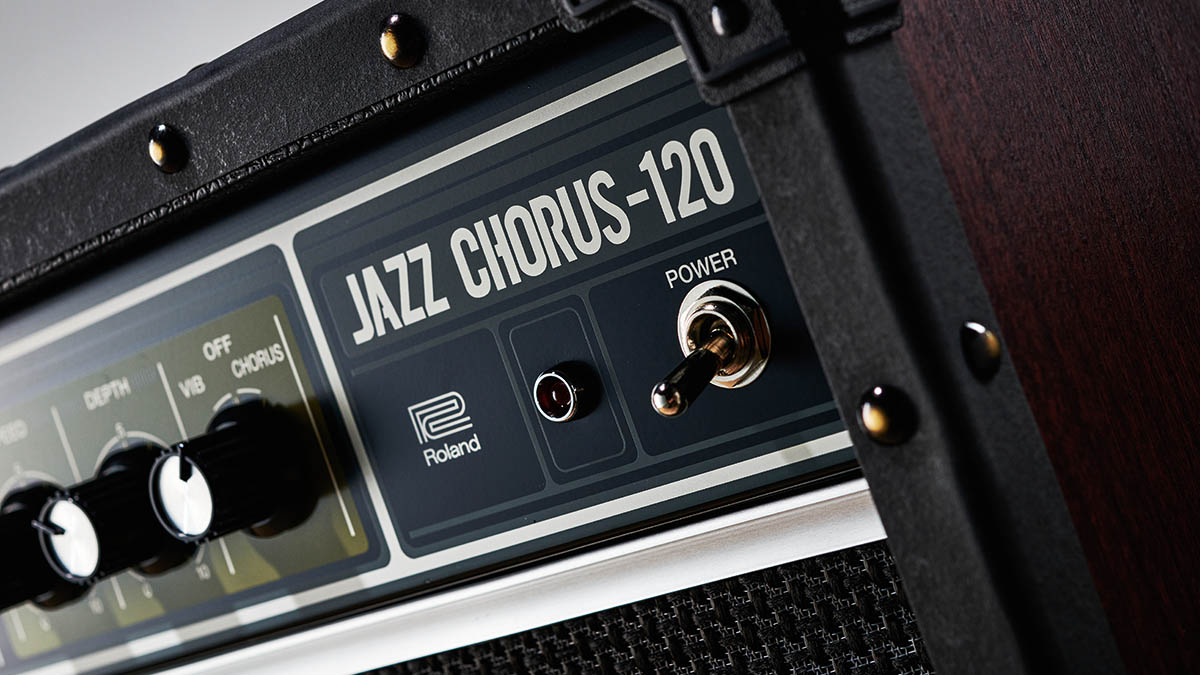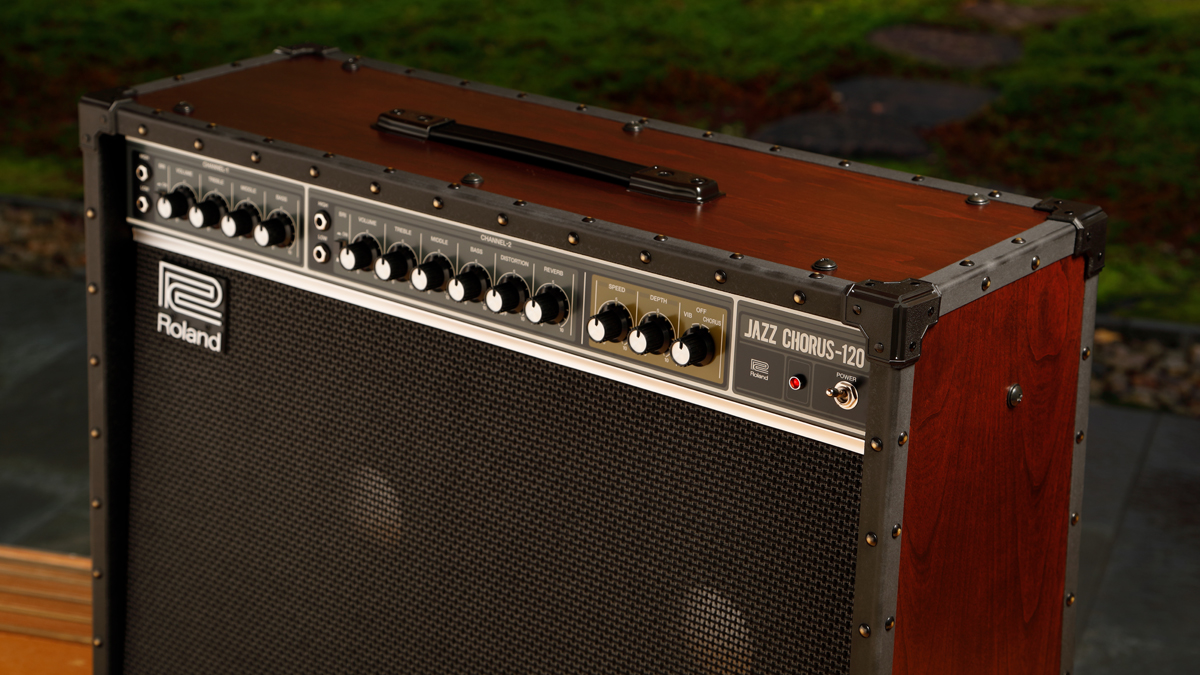How Roland’s JC-120 became the king of solid-state guitar amps
We unpack the magic of the Jazz Chorus, which has been producing reference-quality clean tones and sublime chorusing for everyone from The Police to Metallica since its introduction in 1975

In recent years, advances in digital modelling amps have, at last, offered a variety of non-tube amps that most of us would be happy to use in one context or another. But prior to the digital revolution, the much-maligned analogue transistor guitar amp was generally regarded as a poor relation to classic valve amps. There were, however, some honourable exceptions…
B.B. King used Lab Series amps at one point, as did Allan Holdsworth, and British-made Award Session amps were used by Clapton on his 1986 August album and remain well respected. But the undisputed king of solid-state amps is Roland’s beefy 120-watt, chorus-equipped JC-120 – which became standard kit in studios around the world and has appeared on scores of hit records – primarily for its pristine-yet-warm clean tones.
With a special-design, limited-edition Anniversary model hitting the shops, it seemed a good moment to ask how Roland found a well of tone in transistor amps where others had come up dry. And for that, I turned to Guitarist’s resident amp expert Nick Guppy, who says the first key element in the amp’s success was its in-built stereo chorus effect: common enough now but a rarity when the JC-120 came out.

“Nearly five decades ago, time-based modulation effects were the preserve of expensive studio equipment, so to bring out a guitar amplifier with built-in chorus and vibrato was a big deal,” Nick says. “In an era when transistor amps were prone to failure and many guitarists wanted high-gain boutique valve products, Roland’s JC-120 went in the opposite direction, delivering the cleanest of clean sounds with headroom to spare and proving transistors actually could be reliable.”
Today, every pedal builder has at least one chorus product in its line-up, but in 1975 there wasn’t anything like it
Nick adds that chorus wasn’t the only effect Roland built into its burly new combo – but it was the feature that ‘broke’ the JC-120 on the world stage.
“The JC-120’s built-in effects included footswitchable distortion and a spring reverb on Channel 2, plus a pitch‑shifting vibrato. But it was the warm analogue chorus innovation, which was generated by the now-obsolete MN3002 dual BBD chip, that catapulted the JC-120 into the stadium league.
“It has been used by artists all over the world for genres as diverse as African roots, reggae and metal, from Pat Metheny to The Police and Metallica. Today, every pedal builder has at least one chorus product in its line-up, but in 1975 there wasn’t anything like it – and it was another year before Roland repackaged the JC-120’s chorus/vibrato circuit into the equally legendary Boss CE-1.
Get The Pick Newsletter
All the latest guitar news, interviews, lessons, reviews, deals and more, direct to your inbox!
“Real chorusing is a stereo effect, with the pitch of one channel modulated cyclically up and down, delayed by around 10ms. This is then mixed with the dry/uneffected channel to create a characteristic three-dimensional swirling sound, with the effect happening as the two sound sources combine before reaching the listener’s ears.
“The JC-120 can do this because it’s stereo, with two separate 60-watt power amplifiers each feeding a single specially designed 12-inch loudspeaker. In chorus mode, one speaker gets the pitch-modulated signal, the other is dry,” Nick explains.
“In the JC-120’s vibrato mode, both speakers are pitch-modulated. To record it in stereo, you need two microphones close on each speaker. The Speed and Depth controls operate in Vibrato mode only; the control settings are fixed in chorus mode and can’t be altered,” Nick continues.

Fully featured
The JC-120’s other front-panel features included two footswitchable channels with high- and low-gain inputs, Bright switches, separate volume controls and independent three-band EQs.
Separate footswitch jacks on the rear panel control channel-switching and effects; Channel 2’s reverb came courtesy of a spring tank from OC Electronics on earlier models, with its politically incorrect ‘Manufactured by beautiful girls in Milton, Wisconsin’ sticker. But the amp’s sustained popularity meant that periodic updates were deemed necessary.
The internal layout has changed, the Chorus/Vibrato switch has transformed from a toggle to a rotary, and the overdrive circuit has been modified several times
“Over the years there have been many incremental changes to Roland’s winning formula,” Nick says. “The internal layout has changed, the Chorus/Vibrato switch has transformed from a toggle to a rotary, and the overdrive circuit has been modified several times, Later versions from around 1986 added a mono send/stereo return effects loop.
“One feature that has stayed more or less the same is the JC-120’s specially designed loudspeakers. While speaker substitution has always been a hot topic, most users are happy with the JC-120 in standard configuration; as with most classics, if it isn’t broken, don’t try fixing it.”
Roland has provided a nice coda to this process of evolution with its recent 50th Anniversary JC-120 (pictured above), released somewhat mysteriously ahead of the actual anniversary of the model’s introduction in 1975. There are a number of special upgrades that befit the occasion.
For starters, the Anniversary model, limited to just 350 amps worldwide, features an open-pore, cherry-wood-veneer cabinet, lending it an understated boutique feel straight away, while the dark-grey grille cloth is a special pattern that draws upon Japanese visual design heritage.
There’s also a commemorative, numbered badge that shows which one of the run of 350 amps is yours. Unsurprisingly, this exclusivity comes at a cost – if you can get hold of one it will set you back £1,689, around £400 more than a standard JC-120, though you do get to own the most attractive version of the JC we’ve seen to date, plus a little bit of tone history (and an amp that’s as great-sounding as ever) for your trouble.
Jamie Dickson is Editor-in-Chief of Guitarist magazine, Britain's best-selling and longest-running monthly for guitar players. He started his career at the Daily Telegraph in London, where his first assignment was interviewing blue-eyed soul legend Robert Palmer, going on to become a full-time author on music, writing for benchmark references such as 1001 Albums You Must Hear Before You Die and Dorling Kindersley's How To Play Guitar Step By Step. He joined Guitarist in 2011 and since then it has been his privilege to interview everyone from B.B. King to St. Vincent for Guitarist's readers, while sharing insights into scores of historic guitars, from Rory Gallagher's '61 Strat to the first Martin D-28 ever made.
"I never use my tube amp at home now, because I have a Spark Live": 5 reasons you should be picking up the Positive Grid Spark Live in the massive Guitar Month sale
“Our goal is to stay at the forefront of amplification innovation”: How Seymour Duncan set out to create the ultimate bass amp solution by pushing its PowerStage lineup to greater heights











